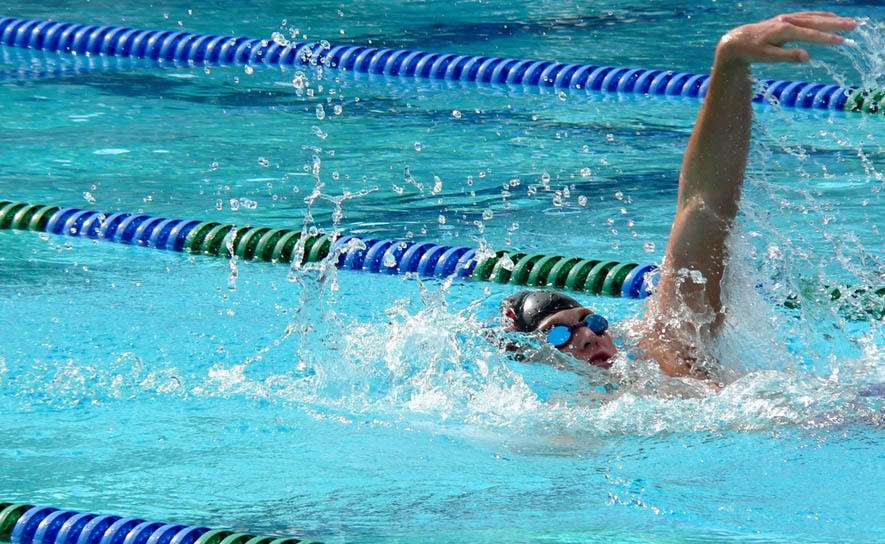USA Swimming News
Make the Impossible Possible

by Mike Gustafson//Contributor
Last week, when I heard about Eastern Michigan University cutting their men’s swimming and diving program, I wasn’t shocked. This is the world we live in now: Any time, anywhere, NCAA men’s teams are at-risk of being cut. A successful UCLA men’s program years ago. A Maryland team with a beautiful facility. Illinois, part of the cash cow Big Ten. And so many more.
But I was surprised. Surprised because EMU was one of the most successful mid-tier NCAA Division 1 programs in the Midwest, and surprised because their reputation around Michigan was that of a steady, supported, renown program. Growing up in Michigan, quite a few of my friends and age group competitors swam at EMU, loved their time there, and had the privilege of continuing their careers at the NCAA level.
Though we have watched many men’s swim programs get cut over the years (and watched NCAA football continue to eat up administrative budgets and priorities), I believe NCAA swimming — and by extension, male participation in USA Swimming — is at a crossroads.
When I was an age group swimmer, my main goal — the goal that kept me awake at night, and kept me waking up for those early morning practices — was to swim at the NCAA level. Not Olympic gold medals. Not National Championships. My goal was not centered around accomplishment or accolades. It was a participatory goal. I merely wanted to participate at the NCAA level.
Many of my teammates shared that goal, too. We all swam high school, and high school swimming offered us that team-like, ultra-competitive atmosphere that we loved. But the swimmers, like me, who wanted to continue their career at the NCAA level also swam year-round. We swam for club teams, for USA Swimming teams, because we knew we had to be the best possible swimmers we could be. We swam for USA Swimming teams because USA Swimming teams gave us the best possible chance to continue our careers.
And we didn’t want to retire after high school.
As fewer and fewer college programs offer men’s swimming and diving, I am fearful for the future of participation in our sport — not just at the obvious NCAA level, but at the high school level.
I understand many of the counter-arguments, the reasons why NCAA men’s swimming continues to find itself on the chopping block. Many arguments are made by schools who have over-spent on their football programs, or by schools who identify football as a business opportunity, and view swimming as a business liability.
The fact is, we can’t argue with every such athletic departments and point out their budgeting flaws. They know the flaws. But they will continue to cut NCAA men’s swimming anyway.
So what, then, is to be done?
First, every NCAA men’s team needs to begin an endowment now. They need to reach out to alumni, not just swimming and diving alumni, but school alumni, and articulate the creation of the endowment and the goals behind it. NCAA teams need to prepare for the announcement as though it can happen tomorrow. Because it can.
Second, members of USA Swimming teams should view this problem as a sport-wide problem, not as an isolated organizational one. NCAA swimming participation affects USA Swimming participation. If in ten years, there simply aren’t enough mid-tier swim programs available or offered, I would question what would happen at the age group participation level. Just simply being aware that these cuts affect everyone is part of the battle.
And finally, we need to realize, this is not only about money. This is about perception. And the perception some athletic directors have is that NCAA swimming “can go.” We — as a sport — have to change that perception.
About ten years ago, I visited the campus of Arizona State the week after they cut their men’s program. The team was successful. The facility was beautiful. But the program was cut. And, in the following days, weeks, and months, I watched that team, program, coaches, swimmers, and alumni rise up. They raised funds, and they raised awareness. They changed the perception. And if you had told me ten years ago, watching the tears form in some of those current swimmers who were contemplating retiring from the sport forever, that ten years from that announcement, the program would not only return, but flourish? If you had told me then that the world’s greatest-ever athlete on Earth would reside in its community? That one of the greatest Olympic sport coaches of all-time would head its program?
I would have said, “Impossible.”
But Arizona State returned. They are flourishing.
And that is what we need, sport-wide, right now. We need to make the impossible possible.
And it starts with EMU.
